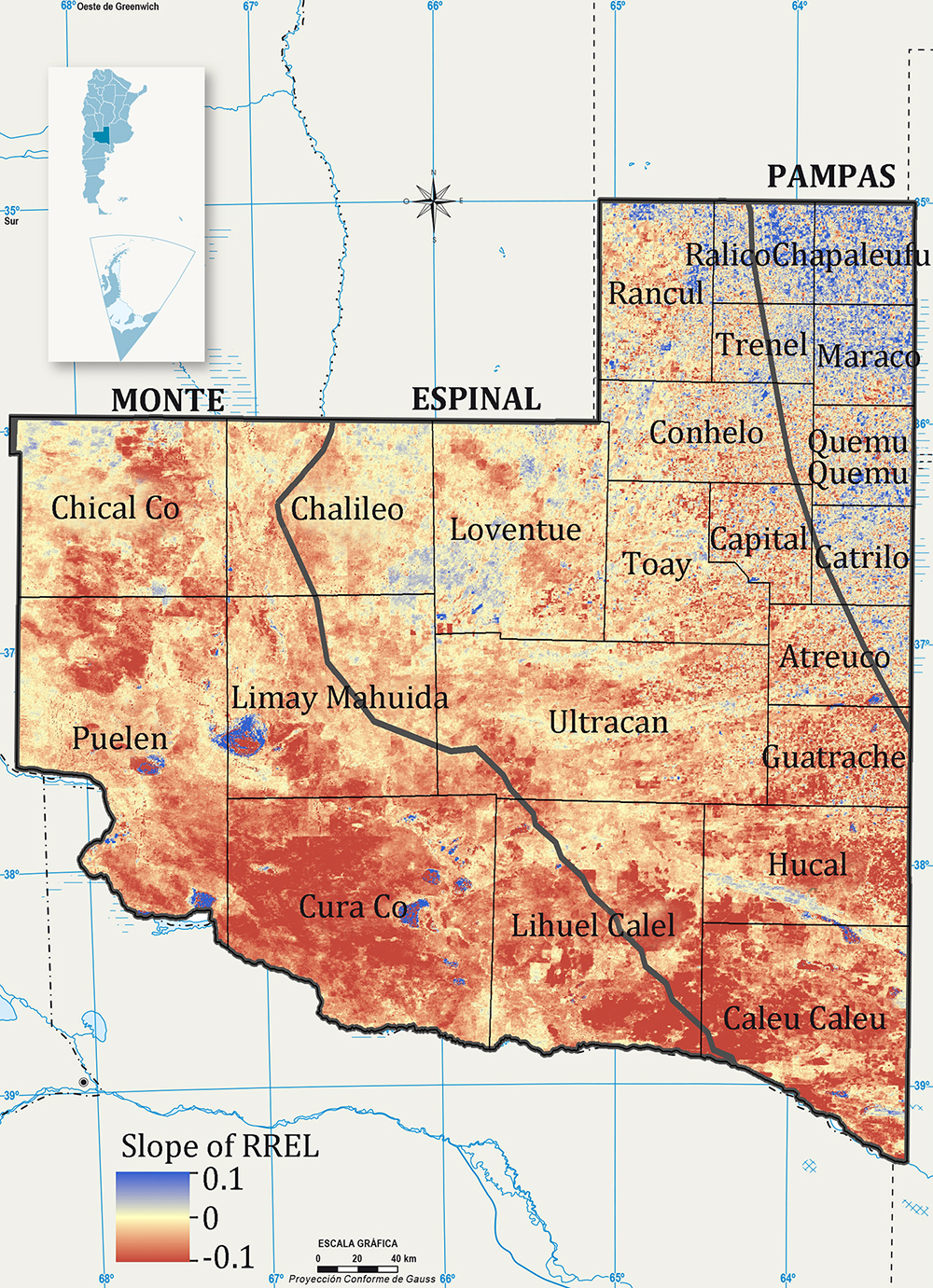Changes in vegetation seasonality and livestock stocking rate in La Pampa Province (Argentina)
Palabras clave:
MODIS, EVI, índices espectrales, proporción de arbustosResumen
Crop production is traversing expansion and intensification processes all over the planet and in consequence the large scale cattle production is being displaced to marginal lands with lower stocking capacity. The objective of this work was to assess the seasonality of vegetation in La Pampa province located in a semiarid region in Argentina and to explore if the variations in seasonality are related to the stocking rate. The hypothesis is the changes in stocking rate of rangelands and its grazing pressure alter the proportion of different vegetation functional groups and so the vegetation seasonality. It is predicted that overgrazing of seasonal grasses will alter the proportion of woody species having consequences over spectral indices. It was analyzed satellite data, particularly the MODIS Enhanced Vegetation Index (EVI) and related it to stocking rate records from SENASA. This work evidences the relationship between the stocking rate and the spectral index EVI, indicator of the primary productivity of vegetation, at departmental scale in the natural areas of Monte and Espinal of La Pampa. Results indicate that in western region (Monte) there was an increment in the stocking rate at department level and a decrease in vegetation seasonality. It is posed that the higher grazing pressure led to the overgrazing of the most palatable herbaceous species, increasing the shrub proportion in landscape.

Descargas
Publicado
Número
Sección
Licencia
Aquellos autores/as que tengan publicaciones con esta revista, aceptan las Políticas Editoriales.


